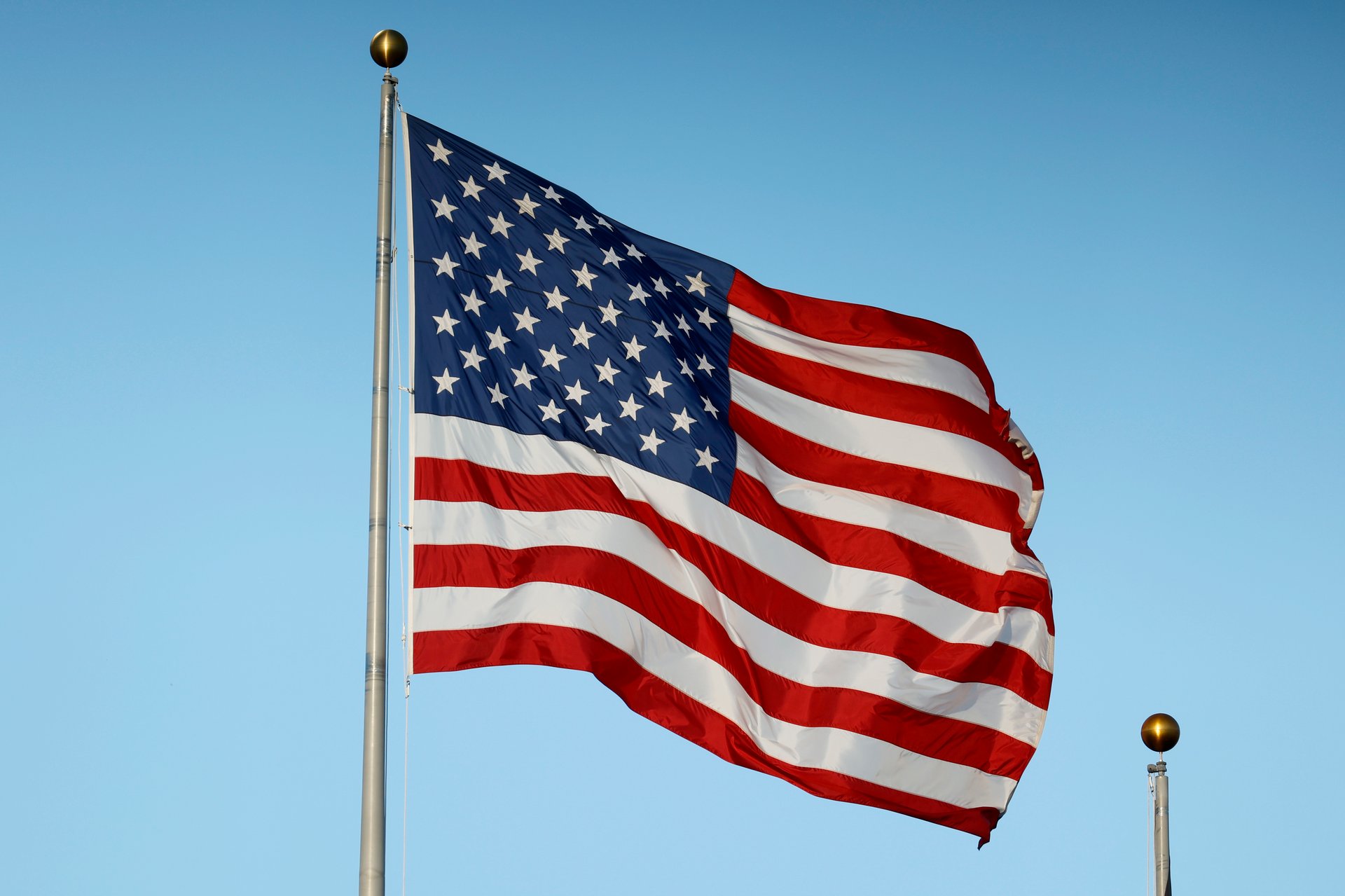
America added 1,000 new millionaires every day last year
The UBS 2025 Global Wealth Report highlights the growing significance of "everyday millionaires," or "EMILLIs"

The UBS 2025 Global Wealth Report highlights the growing significance of "everyday millionaires," or "EMILLIs"
The world got richer in 2024 — and in the U.S., new millionaires were minted at a rate of more than 1,000 per day.
That’s one takeaway from the UBS 2025 Global Wealth Report, which highlights the growing significance of “everyday millionaires,” or “EMILLIs,” defined as individuals with between $1 million and $5 million in assets.
The number of these so-called EMILLIs has more than quadrupled since 2000, reaching 52 million people globally and accounting for $107 trillion in total wealth. That's almost as much as the $119 trillion held by individuals worth more than $5 million.
In all, global personal wealth rose 4.6% in 2024, outpacing the previous year’s 4.2% gain. The growth was uneven, however, with North America leading the pack. Booming financial markets drove U.S. wealth levels up more than 11%, accounting for a significant share of the total global rebound. That's unsurprising given the returns in major U.S. indexes, including a 25% gain in the S&P 500 and a 30% leap in the tech-heavy Nasdaq Composite.
On the other hand, with weaker stock market returns, regions like Western Europe and Latin America saw modest relative declines in wealth.
The number of billionaires worldwide also grew, but not at the same sharp pace.
UBS tallied almost 3,000 individuals with more than $1 billion in assets at the end of 2024, edging up slightly from the year prior. Most held between $1 billion and $49 billion, and only 31 held assets topping the $50 billion mark.
The report also emphasizes a longstanding truth: Wealth and income are not the same thing. While salaries influence public perceptions of prosperity, long-term wealth depends more on inheritances, market access, real estate values, and compounding capital. That explains why some high-income nations punch below their weight in wealth terms, while others show surprising levels of private wealth relative to earnings.
Looking ahead, UBS argues that the so-called “Great Wealth Transfer,” in which $83 trillion is expected to pass from older generations to their heirs over the next 20 years, may already be underway.
Women are expected to benefit disproportionately, especially in the U.S. Because women tend to outlive men, and stand to benefit from two significant transfers (from parents to children, and from one spouse to another), it's likely that, over the next few decades, women may come to control a greater and greater portion of U.S. and global wealth.

The Fed held rates steady and signaled two rate cuts in 2025, all in line with expectations.
Despite political pressure to cut rates, the Federal Reserve held interest rates steady Wednesday, sticking to a wait-and-see strategy as inflation shows signs of cooling but remains above target.
"Although swings in net exports have affected the data, recent indicators suggest that economic activity has continued to expand at a solid pace. The unemployment rate remains low, and labor market conditions remain solid. Inflation remains somewhat elevated," the Fed statement read.
The decision and surrounding reasoning, widely expected by markets, leaves the federal funds target rate at its current range of 4.25% to 4.50%. Futures traders going into the meeting priced in less than a 1% chance of a cut so are unlikely to be surprised by the announcement.
Looking ahead, the Fed continues to expect two rate cuts this year.
If the Fed’s decision isn’t surprising, the political backdrop remains extraordinary.
President Donald Trump has repeatedly called for immediate rate cuts to support the economy amid trade tensions — and has personally targeted Fed Chair Jerome Powell, whom he had appointed in 2017, calling him a “FOOL” on social media, with further comments on Wednesday.
But Powell and his colleagues have held firm, citing inflation expectations and the still-fragile global outlook. While headline inflation has moderated, it remains above the Fed’s 2% target. And Trump’s various rounds of tariffs since assuming office early this year— announced piecemeal and often unpredictably — has introduced new volatility into supply chains and price forecasts.
“We don’t feel like we need to be in a hurry,” Powell said in May. “We feel like it’s appropriate to be patient.”
That patience, of course, comes with risks. U.S. GDP contracted in Q1 and may do so again in Q2. Job growth is somewhat sluggish. And while the market has bounced back from its April “Liberation Day” lows, consumer sentiment remains uneasy. Meanwhile, Fed officials appear more concerned about reigniting inflation than about being seen as unresponsive.
The central bank’s credibility — and the value of its independence — may be its most powerful tool right now.
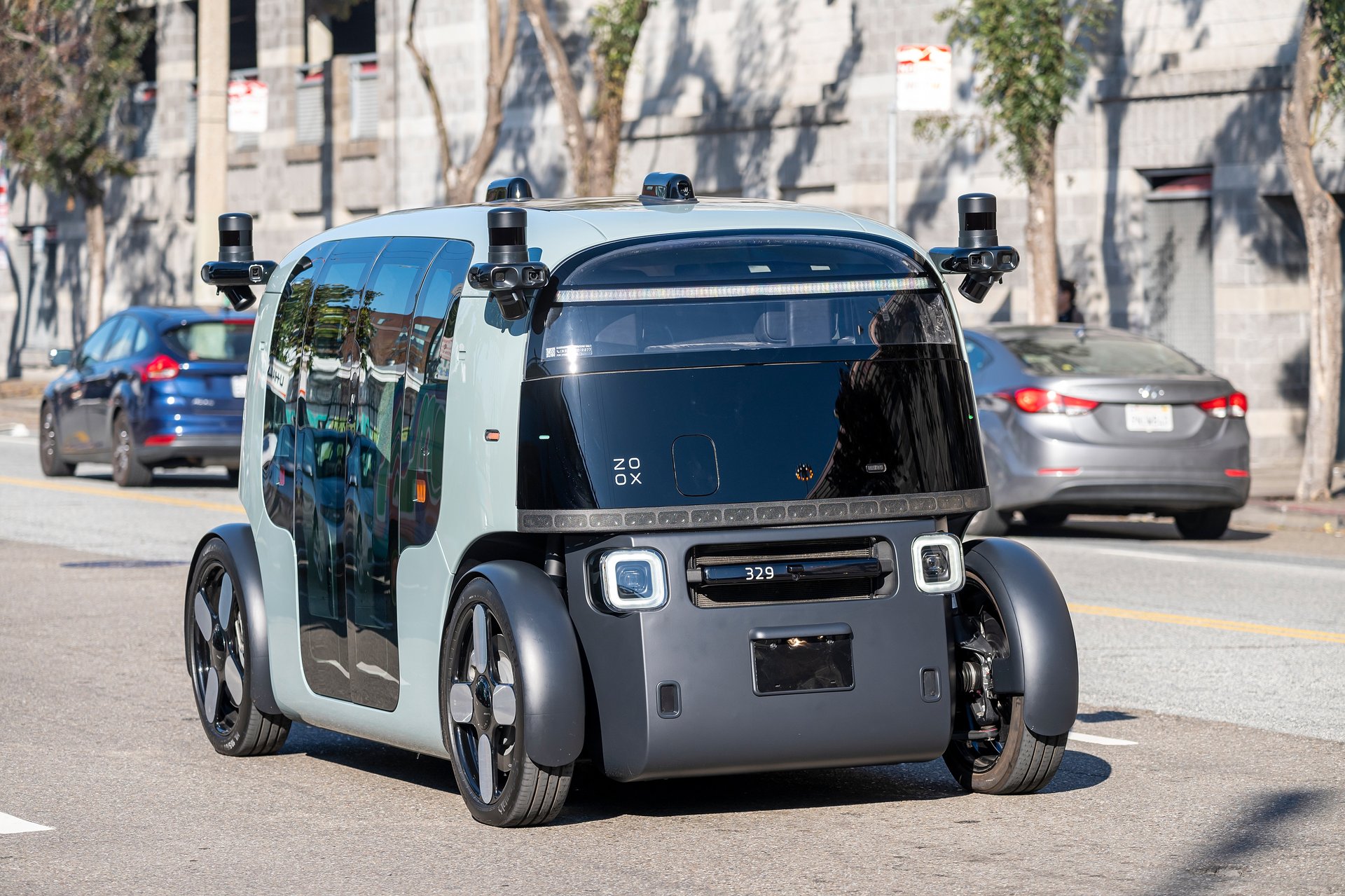
The plant will make 10,000 cars annually, taking the self-driving race up a gear.
Zoox—Amazon’s autonomous vehicle subsidiary—has officially launched its inaugural robotaxi production facility in Hayward, California, the company announced Wednesday.
At 220,000 square feet—the equivalent of 3.5 American football fields—the plant will be capable of assembling over 10,000 cars annually.
The Hayward facility marks a pivotal moment for Zoox as it transitions from limited testing to large-scale production—and primes Amazon to vie head-to-head with the established players in the robotaxi arena.
More than 20 Zoox prototypes are currently undergoing testing across U.S. cities, as the company prepares to launch its commercial service in Las Vegas later this year. San Francisco is among its test cities, and it plans to onboard public riders here first.
"This expansion, plus the anticipated demand once rides open up to the general public, and additional market entrances in the coming years warrants this increase in robotaxi production," Zoox said in a statement.
What sets Zoox apart from its rivals is its bespoke vehicle design—animated more like “gondolas on wheels.” The cars forsake conventional steering wheels and pedals, a stark departure from retrofitted models used by Waymo and Tesla.
While the plant notches Zoox's position in the robotaxi race up a gear, it's still miles behind its competitors.
Alphabet’s Waymo, was the first to put a fully driverless taxi on the road. It operates a fleet in multiple U.S. cities, including Phoenix, San Francisco, and parts of Los Angeles and Austin. They’re coming to Atlanta, Miami, Washington, D.C., and even Tokyo soon. As of mid-2025, Waymo is providing millions of driverless rides per quarter, with consistent safety records and publicly available data.
Tesla is also poised to launch its robotaxi service on June 22, starting with modified Model Y vehicles, before later introducing a wheel-free “Cybercab.” Thus, this month's launch isn’t a fully autonomous debut. The Model Y vehicle will be equipped with the company’s full self-driving (FSD) software, and each will be monitored by human operators ready to intervene remotely if things go sideways. This falls short of CEO Elon Musk’s vision for fully driverless Teslas commanded by AI alone.
“The overwhelming focus is on solving full self-driving. That’s essential. It’s really the difference between Tesla being worth a lot of money or worth basically zero,” Musk said in 2022.
However, for all three companies, obstacles persist on the road to a driverless future. Headwinds range from high production costs and regulatory red tape, to federal probes into safety incidents. For example, Zoox issued a voluntary software recall following a non-fatal crash in Las Vegas last month.
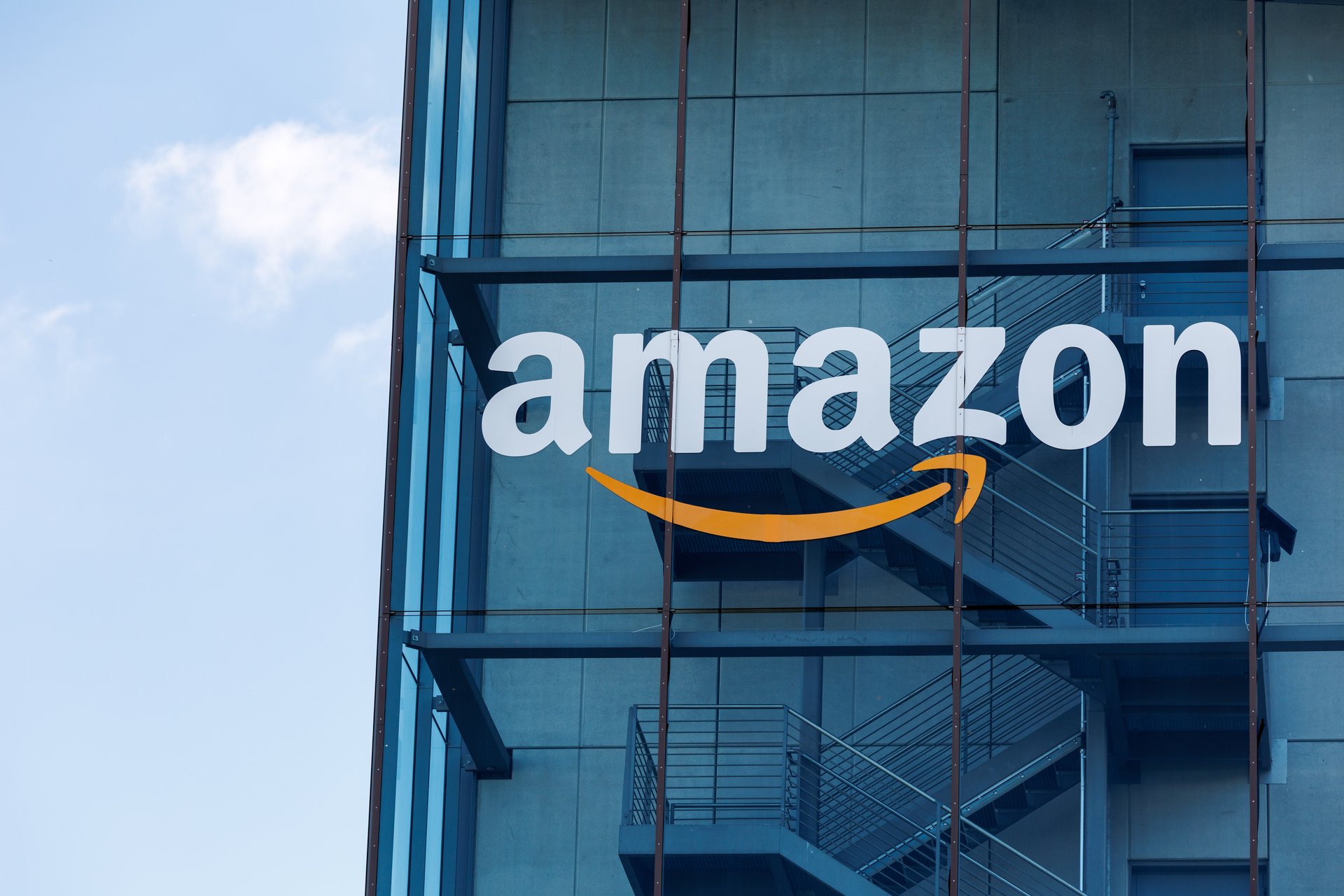
After CEO Andy Jassy said in an email that AI would likely drive a workforce reduction, employees took to Slack to express their frustrations
Amazon’s corporate workforce woke up Tuesday to a not-so-cheery note from CEO Andy Jassy: The AI era is here — and your job might not be.
That didn’t go over well internally.
According to Business Insider, white-collar employees pushed back — hard — across internal Slack channels. In messages viewed by the publication, some employees called the message demoralizing; others accused Jassy of prioritizing AI hype over human impact. One employee said there’s “nothing more motivating on a Tuesday than reading that your job will be replaced by AI.”
Another quipped: “At least [Jassy] said the quiet part out loud.”
In a company-wide memo, Jassy had framed generative AI as the engine powering Amazon’s next chapter — from customer service to code writing to warehouse logistics. The technology, he said, is already streamlining operations and enabling new tools such as Alexa+, “Buy for Me,” and a swelling army of over 750,000 warehouse robots. But the efficiency gains, he said, won’t just change how Amazon works — they’ll change who does the work.
“We will need fewer people doing some of the jobs that are being done today,” Jassy wrote, “and more people doing other types of jobs.” That will likely mean headcount reductions on the corporate side; Amazon has already laid off more than 27,000 workers since late 2022.
While a few employees said in messages that middle management could be replaced with AI without consequence — “No one would notice,” someone wrote — the broader sentiment skewed critical. Employees said Amazon is choosing to use AI to reduce staff rather than expand what existing teams can accomplish.
Jassy wrote in his email that research, summarization, anomaly detection, translation, coding, and more will soon be delegated to bots that get smarter over time, leaving humans to “focus less on rote work and more on thinking strategically.”
“Agents will allow us to start almost everything from a more advanced starting point,” he wrote, adding that they’ll “change the scope and speed at which we can innovate for customers.” Jassy encouraged employees to “get more done with scrappier teams,” attend training sessions, and adopt an AI-first mindset. In his words, those who embrace AI and help Amazon build its future will be “well-positioned to have high impact and help us reinvent the company.”
In an annual shareholder letter in April, he had said Amazon needs to operate like “the world’s largest startup,” but in the recent messages, some employees described Amazon’s culture as increasingly focused on cost-cutting, not innovation, and questioned why AI-driven downsizing seems to target the rank and file — not Amazon’s growing executive ranks. “Will it result in less SVPs?” one employee asked.
Another wrote: “This seems to be the [antithesis] of Think Big, and is part of a continual trend that our CEO doesn't seem to have a vision for the company other than ’do what we do today cheaper, and also AI will happen.’”
Amazon didn’t respond to a request for comment.
In the memo, Jassy said employees who embrace the AI-first mindset will be “well-positioned” to help reinvent the company. But the company’s pivot is “dangerous,” one employee wrote, “and it will have real consequences.”
The debate unfolding at Amazon echoes broader tensions in Big Tech. Microsoft, Google, and others are pouring billions into AI while working to reduce their headcount. Startups such as Harvey and Adept are building AI agents meant to handle knowledge work. And leading voices — from Nvidia’s Jensen Huang to Anthropic’s Dario Amodei — have warned that widespread displacement is coming.
At Amazon, that future seems like it could be less theoretical by the day.
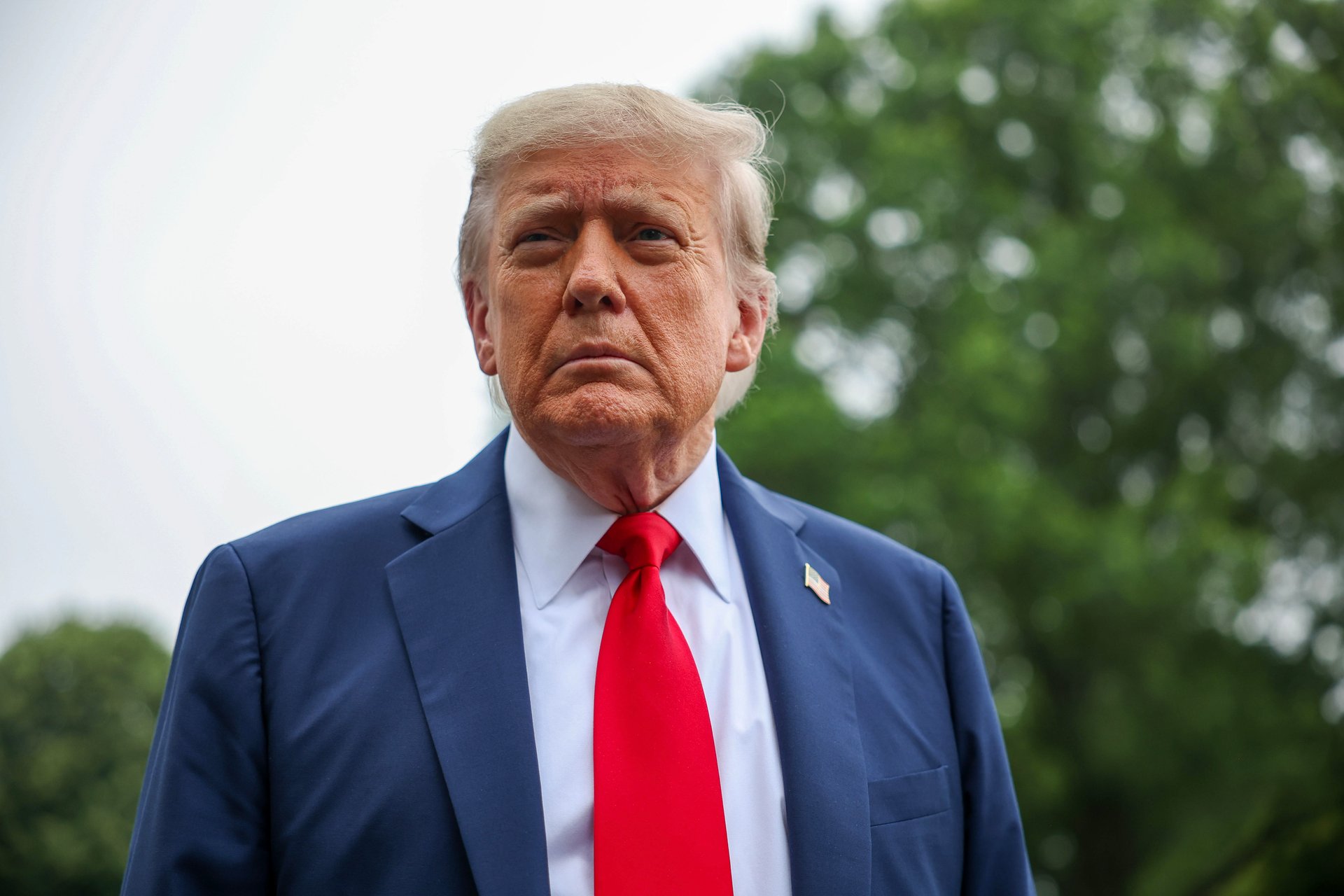
The president insulted Powell anew and toyed with installing himself as Fed leader ahead of the central bank's latest decision on interest rates
President Donald Trump is still fed up with the Federal Reserve for not bending to his longstanding and extraordinary pressure campaign.
Ahead of the central bank's latest decision on interest rates, Trump on Wednesday renewed his barrage of attacks against Fed Chair Jerome Powell. He insulted Powell and toyed with the idea of installing himself as Fed Chair. He also said that if he were in the position, he would lower interest rates by 2.5 percentage points.
"We have a stupid person, frankly, at the Fed. He probably won't cut today. ... Maybe I should go to the Fed. Am I allowed to appoint myself at the Fed?" Trump said outside the White House.
Trump continued his freewheeling remarks and said nothing he's done to pressure the central bank has been successful at getting it to lower interest rates. "Now we have a man that just refuses to lower the Fed rate, just refuses to do it," he said. "He's not a smart person. I don't even think he's that political. I think he hates me, but that's okay."
Trump continued: "He should, I call him every name in the book trying to get him to do something. I've been nice to him. I do it every way in the book. I'm nasty, I'm nice. Nothing works. He's like a stupid person."
The Federal Reserve did not immediately respond to a request for comment.
Few are expecting an interest rate cut from the Federal Reserve as it wraps up its two-day meeting. The Fed is sitting tight at the moment to better measure the effect of Trump's policies — including the armada of tariffs he's deployed — on the U.S. economy before deciding to lower interest rates. Inflation is still above the Fed's 2% target. The central bank operates independently.
Trump first nominated Powell to the position in 2017. Powell visited Trump at the White House's request last month in a rare meeting. In a statement following the meeting, the Fed said Powell didn't discuss specifics on monetary policy "except to stress that the path of policy will depend entirely on incoming economic information and what that means for the outlook."

The increases are incremental for now, but a supply disruption in the Strait of Hormuz could make costs soar
Death and destruction in the Middle East have meant rising gas prices in the U.S.
Data from GasBuddy, compiled from more than 150,000 gas stations across the U.S., reports that the average price has gone up 1.1 cents to $3.08 per gallon since Israel and Iran started bombing each other on June 13, although that is still 9.5 cents lower than in May and 32.7 cents lower than this time last year. Diesel prices went up four cents in the last week.
Gas is most expensive in California, Hawaii and Washington; it is cheapest in Mississippi, Tennessee and Oklahoma. The biggest increases in the last week were found in Indiana, Virginia, West Virginia, and Pennsylvania. Prices in Florida fell 11.4 cents.
“As long as tensions in the Middle East continue to escalate, the risk of further impacts on oil prices remains high,” said Patrick De Haan, head of petroleum analysis at GasBuddy. “For now, I expect gas prices could rise by 10 to 20 cents, while diesel could climb 15 to 25 cents in the coming days."
De Haan added that “the situation has the potential to worsen at any moment.”
Though both countries have targeted oil refineries, no supply has yet been disrupted. The biggest concern is if Iran were to block access to the Strait of Hormuz, which connects the Persian Gulf to the Arabian Sea, through which one-third of global seaborne oil passes through.
ING analysts predict that this would bump prices by $120 a barrel, though it might not be in Iran’s strategic interest to do so — particularly due to the risk of angering its biggest customer, China.
In the meantime, U.S. consumers will be subject to a “risk premium,” UBS commodities analyst Giovanni Staunovo told GasBuddy. “Risk premia tend to fade if there are no disruptions,” he added.
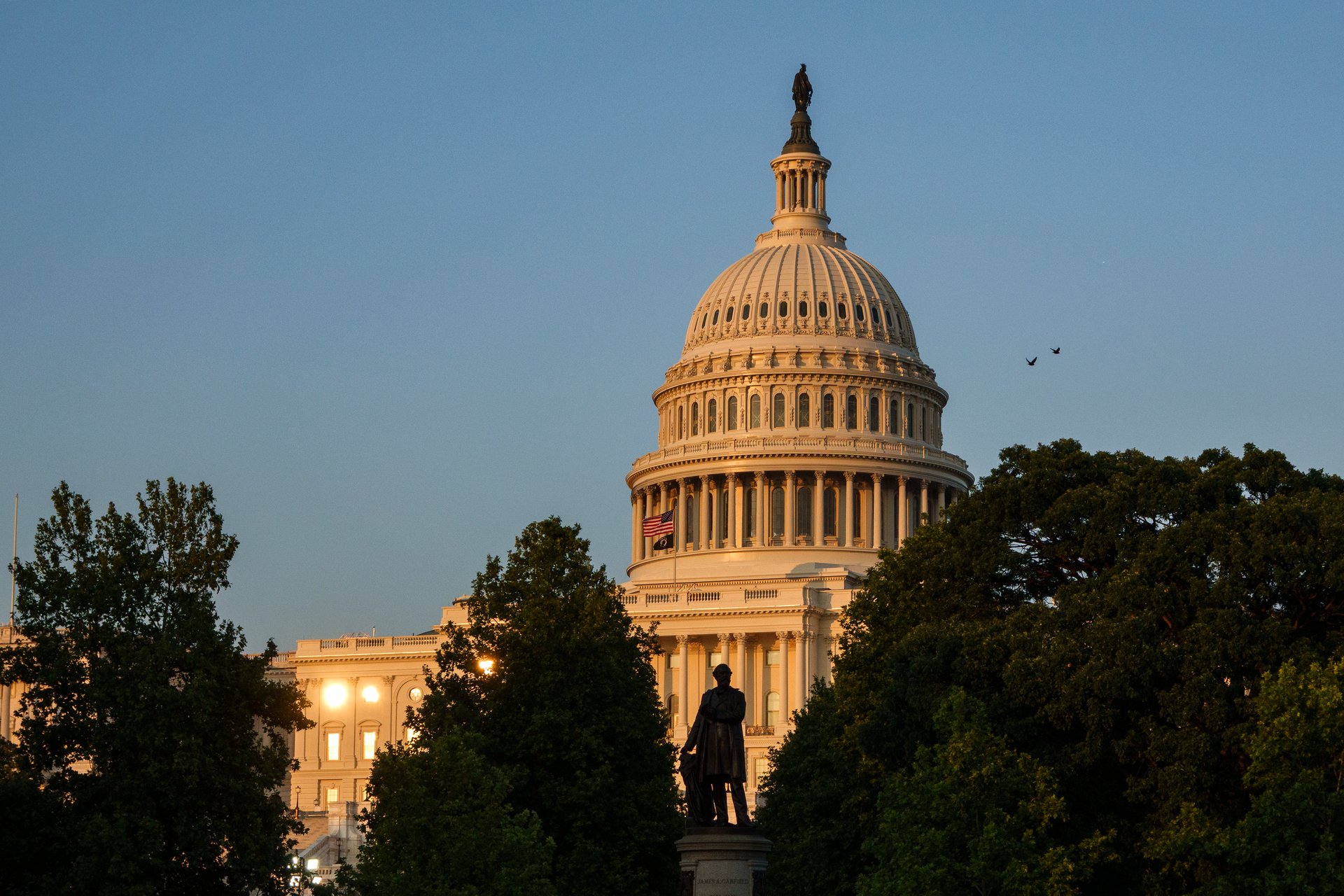
The digital asset sector has long craved legitimacy through federal regulation
The Senate approved a big cryptocurrency bill in a 68-30 vote on Tuesday, with 18 Democrats joining most GOP senators to hand a victory to a digital asset sector that's long craved legitimacy through federal regulation.
The bill, known as the "GENIUS Act," would establish consumer protections and impose guardrails on stablecoins, a digital asset that's pegged to the U.S. dollar. Stablecoins are designed to be less volatile than Bitcoin, a token that swings wildly in price. Now the bill heads to the House, where lawmakers are expected to leave their imprint and amend it.
“With this bill, the United States is a step closer to being a global leader in crypto,” Republican Sen. Bill Hagerty of Tennessee, a bill sponsor, said on the Senate floor.
The crypto industry also cheered the development. "By advancing bipartisan stablecoin legislation, the Senate has taken a critical step toward providing the legal and regulatory clarity needed to foster responsible innovation and protect consumers," said Summer Mersinger, Blockchain Association CEO in a statement. She called it a "win" for American developers and entrepreneurs.
Sens. Josh Hawley of Missouri and Rand Paul of Kentucky were the only two GOP senators to oppose the measure. Most Democrats lined up against the measure since they argued it didn't do enough to establish limits on the Trump family's ability to profit off of their cryptocurrency ventures.
“Passing the GENIUS Act without strong anti-corruption measures stamps a Congressional seal of approval on President Trump selling access to the government for personal profit," said Sen. Jeff Merkley, a Democrat from Oregon, in a statement following the bill's passage.
President Donald Trump has signaled he wants passage of major cryptocurrency legislation before Congress adjourns for its regular summer recess in August. But that schedule is already getting packed with consideration of his megabill carrying the bulk of his agenda on taxes, border enforcement, and defense spending.

The U.S. is running an annual travel trade deficit of $50 billion, compared with a $3.5 billion surplus in 2022
Fewer Western Europeans are traveling to the U.S., according to the National Travel and Tourism Office (NTTO), which reported a 4.4% drop in May.
Eastern Europeans appear to have fewer qualms: Trips from that region are up 4.6%. The net result in the short term is that travel from Europe to the U.S. is down.
These are just the latest figures in a year filled with generally dire news for the U.S. travel industry, which faces a multi-billion-dollar deficit, its worst in more than 25 years.
The NTTO report says arrivals from anywhere in the globe are down 2.8%, and inbound bookings for July are down 13% year-over-year. The only regions that increased their trips to the U.S. in May were the Middle East (2%, for an increase of 5.3% year-over-year) and Central America excluding Mexico (2.9%).
Germany in particular is avoiding the U.S.: The number of German travelers is down 18.7% year-over-year. Argentinians, on the other hand, are flocking to the U.S., with trips up 20.7%.
Student visas from many countries have plummeted, often by double-digit percentages. Yet they’re up 63% from Slovenia, 50% from Latvia, and 100% from Fiji. The Institute of Educational Enrollment expects the drop to result in a loss of up to $4 billion in spending.
The U.S. Travel Association says the United States is now running an annual travel trade deficit of $50 billion, compared with a $3.5 billion surplus in 2022.
“This presumably reflects increased hostility by many foreigners to the U.S., as well as fear of harassment by ICE officers,” Dean Baker, senior economist for the Center for Economic and Policy Research, wrote in an April 30 note reviewing the first quarter GDP numbers.
A strong U.S. dollar earlier in the year might also be a factor, although it has been freefall since January.
Reuters reported that airfares between London and Atlanta were down 55% year-over-year, according to data from aviation analytics firm Cirium. More than 50 routes from the U.S. to Europe saw the average round-trip economy airfare fall by an average of 7%.
With European reluctance to travel to the U.S., airlines are cutting fares headed across the Atlantic in hopes of attracting bargain-conscious Americans. As a result, U.S. bookings to Europe are up 4.3%, according to the travel-booking app Hopper.
“Airfare from the U.S. to Europe is averaging $817 per ticket this summer, down 10% compared to prices last year, or about $96 per ticket,” reads Hopper’s Summer 2025 International Travel Guide. “Fares are in line with prices available to Europe in the summer of 2019, marking a return to pre-pandemic pricing for travel to Europe.”
—Catherine Arnst contributed to this article.
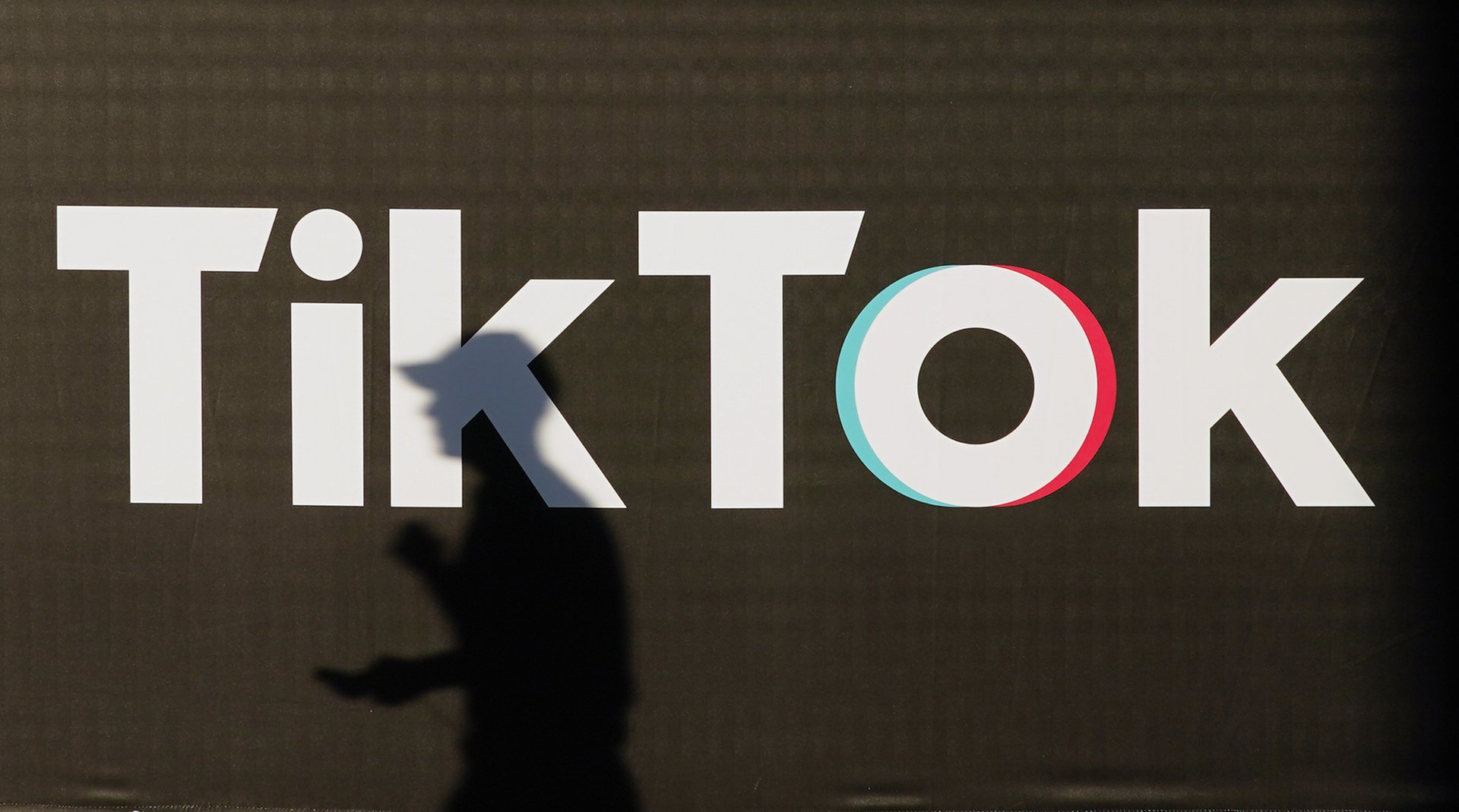
The president pushed TikTok's sale for the third time — this time to September — as the White House says Trump doesn't want the app "to go dark"
It seems TikTok’s clock isn’t going ticktock. President Donald Trump is once again giving the app a lifeline, extending the deadline for its Chinese owner, ByteDance, to sell its U.S. operations — for the third time.
The move, confirmed by the White House on Tuesday, pushes enforcement of the federal ban to mid-September and gives negotiators another 90 days to cobble together a deal that satisfies both Washington and Beijing. Trump had told reporters aboard Air Force One on Tuesday that he expected to extend the deadline.
“Probably have to get China approval, but I think we’ll get it,” Trump said. “I think President Xi will ultimately approve it.”
The White House framed the extension on Wednesday as a practical necessity to “ensure this deal is closed so that the American people can continue to use TikTok with the assurance that their data is safe and secure,” White House Press Secretary Karoline Leavitt said, adding that the president doesn’t want TikTok “to go dark.”
That’s a far cry from the administration’s original posture, which promised a hardline stance against Chinese ownership of U.S. user data. The Protecting Americans from Foreign Adversary Controlled Applications Act (PAFACA), passed in April 2024, set a January 19 deadline for divestment, with a single 90-day extension permitted if real progress was underway.
That extension had already been invoked twice (after the first deadline passed in April and the second in mid-June), and critics argue the law is being stretched past its limits. Senator Mark Warner (D-Va.) has called the postponed sale deadlines “against the law,” and Congress’s frequent extended deadlines have frustrated lawmakers on both sides of the aisle.
So far, there’s little evidence that a sale is imminent. Oracle, Walmart, and a shortlist of financial backers have circled TikTok’s U.S. operations, but talks have reportedly stalled, thanks in part to rising tensions with Beijing and a fresh wave of Trump-imposed tariffs. Former Los Angeles Dodgers owner Frank McCourt has been vocal about his $20 billion bid for the app — and his plans to transform it. But ByteDance is holding tight. The deal’s biggest sticking point remains TikTok’s prized recommendation algorithm, which Chinese officials consider a sensitive export.
Meanwhile, app stores are stuck in purgatory.
Under the law, Apple and Google are required to pull TikTok from their platforms if ByteDance doesn’t divest. But Trump’s reassurances have kept enforcement at bay — for now. That hasn’t satisfied shareholders: Alphabet is already facing a lawsuit from an investor alleging that the company is exposing itself to legal risk by continuing to distribute the app.
For now, TikTok remains available and fully operational. But the clock is still ticking. TikTok has three more months to broker a deal that satisfies Washington, placates Beijing, and somehow preserves the magic of the “For You” page. Failing that, TikTok could be back to the ban hammer — unless, of course, Trump finds another magic snooze button to press.

Nintendo sold millions of Switch 2 consoles within days of the product's release — and hopes to sell 15 million by next year
Shares of Nintendo hit a record high on Wednesday thanks to the company's new Switch 2 console, which hasn't been on the market for long but has already added tens of billions of dollars to the company's value.
The Japanese video game maker, whose stock is traded in the U.S. as an American Depository Receipt, or ADR, has seen its shares jump by around 47% this year.
Nintendo's much anticipated Switch 2, a follow-up to its 2017 console, finally became available for purchase this month and is already in short supply. CNBC estimates that the Switch 2 has added $39 billion to the stock's value.
The company hopes to sell 15 million units by March of next year. It sold an incredible 3.5 million Switch 2 consoles, which retail for $449 each in the U.S., in the first four days of its release.
Since the launch of the original Switch in 2017, Nintendo shares have more than quadrupled.
The Switch 2 release was almost derailed by President Donald Trump's trade war. Nintendo made headlines in April when it announced it was delaying pre-orders of the console due to tariffs. The company quickly resumed pre-orders and said it was keeping the price of the console the same, but it told consumers to expect hikes elsewhere.
“Nintendo Switch 2 accessories will experience price adjustments from those announced on April 2 due to changes in market conditions,” the company said at the time. “Other adjustments to the price of any Nintendo product are also possible in the future depending on market conditions.”
The Switch 2 is so popular it has even become the target of theft. More than $1.4 million worth of the video game consoles were stolen from the back of a semi-truck in Colorado earlier this month and the suspects are still at large, according to local news station Denver 7.